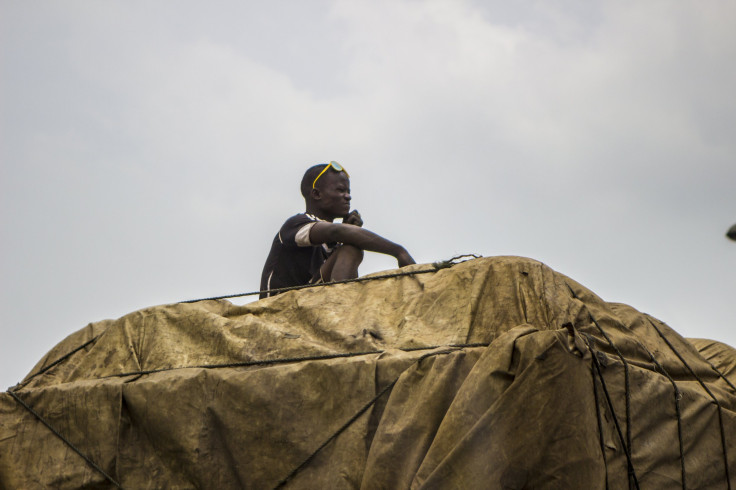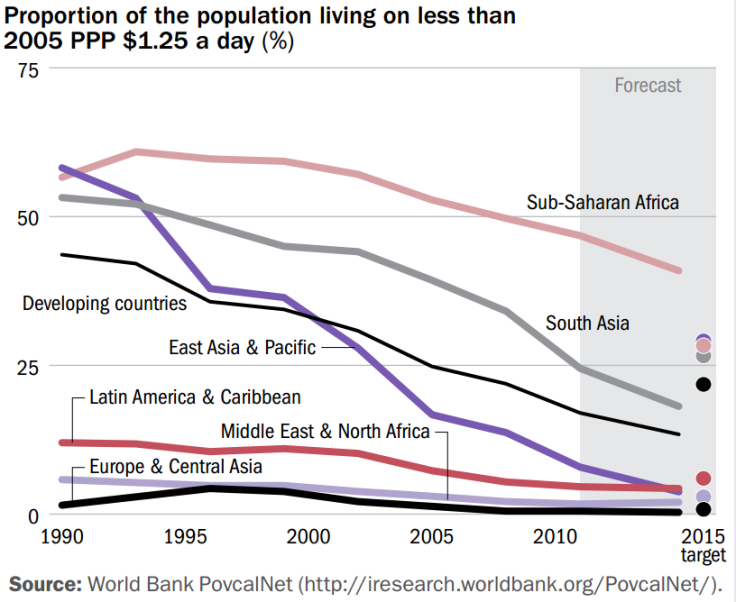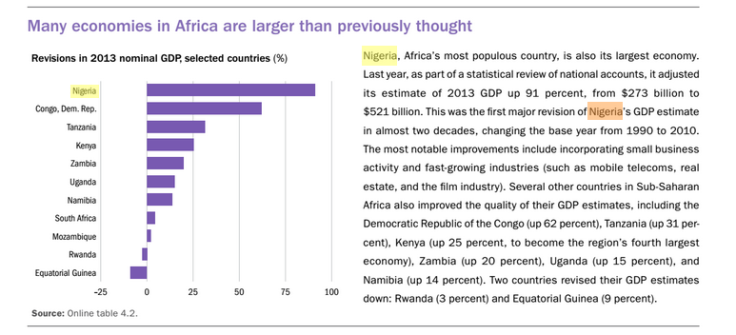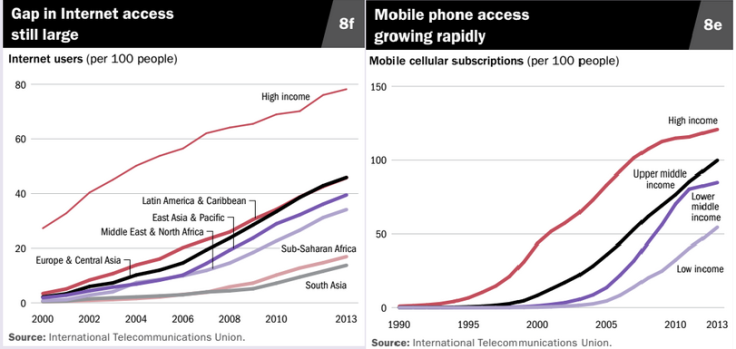Sub-Saharan Africa Falls Behind In Fight Against Extreme Poverty: World Bank Report

Economic development has lifted more than a billion people from extreme poverty in the last 25 years, and the number of citizens living on less than $1.25 per day has declined in every region of the globe except one: sub-Saharan Africa.
Data from the World Bank say that developing countries in East Asia, Latin America and South Asia have seen the number of citizens in extreme poverty -- that is, living on less than $1.25 per day -- on the decline. But in sub-Saharan Africa, these rates are increasing despite the region’s fast-paced economic development in recent years.

“The number of extremely poor people has fallen in all regions except sub-Saharan Africa, where population growth exceeded the rate of poverty reduction,” reads a new World Bank report. It also states that, in terms of poverty eradication, about 45 percent of sub-Saharan countries are “seriously off track” from meeting their Millennium Development Goals.
World Bank analysts estimate that the number of people living in extreme poverty globally has been cut in half since 1990. The organization’s Development Indicators measure myriad problems, from hunger and disease to labor issues and poor access to schools.

The International Monetary Fund has forecast that the region’s gross domestic product (GDP) will grow by 4.5 percent this year, higher than the 3.5 percent global average. But World Bank statistics say it ranks lowest among all regions in gender equality and environmental sustainability, while ranking highest in indicators such as child mortality.
In many cases, very fast-developing countries have yet to pass on the economic benefits to their poorest citizens for a few different reasons.
"I imagine that part of the reason is due to population growth that is outpacing real GDP growth in some countries, which slows growth in GDP per capita," said Angus Downie, head of economics research at Ecobank, adding that it's always difficult to reach broad conclusions for the entire region, with a variety of countries at different levels of economic growth. "Another reason in some countries is due to a lack of economic diversification, which is highlighted when a country is hit by a drought or other external shock, pushing many people that live precarious rural livelihoods back into penury."

Nigeria, for example, became the largest economy on the continent last year after adjusting the way it calculated GDP. It’s also one of the five largest oil producers in the world. However, just 4 percent of girls in the poorest levels of society stay in school until ninth grade.
But despite the drawbacks, there have been important improvements in sub-Saharan Africa. For instance, Rwanda has the highest rate of women participating in public life of any country around the world at 64 percent last year, compared to the 26 percent average of high-income countries. And though there is a major gap in Internet access between developed and developing economies, sub-Saharan Africa has overtaken South Asia in terms of subscribers, which will be important for future development.
“Telecommunications is an essential tool for development, and new technologies are creating opportunities everywhere,” the report reads. High-income economies had 121 subscriptions per 100 people in 2013, while low-income economies had 55 per 100.
But that’s starting to change.
“In 2000 Internet use was spreading rapidly in high-income economies but was barely under way in developing country regions. Now developing countries are beginning to catch up.”

© Copyright IBTimes 2025. All rights reserved.






















